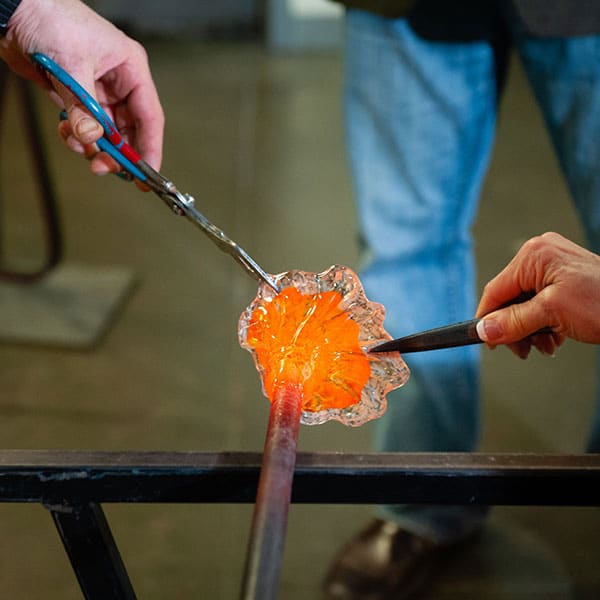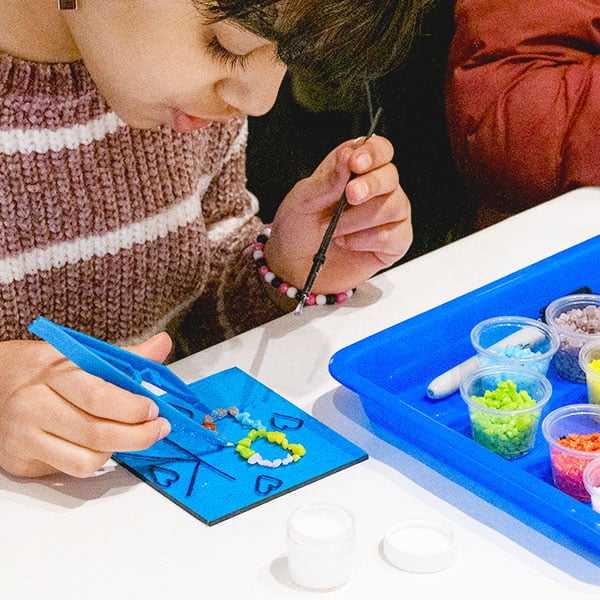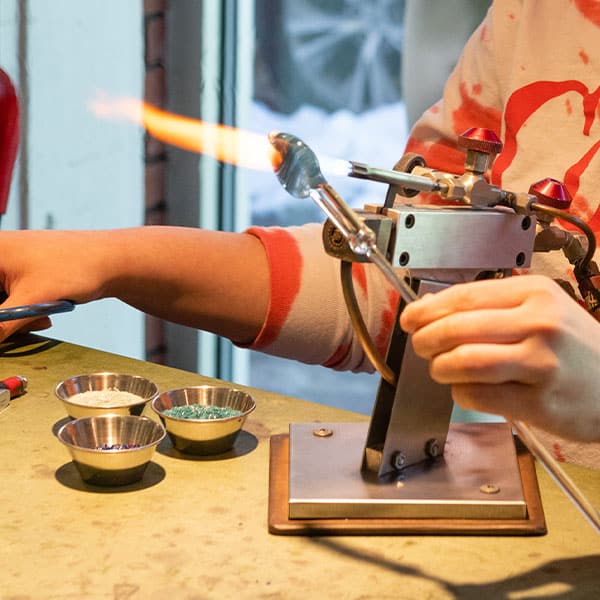Our Mission
Glass Art: We Teach it. We Create it. We Promote it. We Support Those Who Make it.
Who We Are
Established in 2001, Pittsburgh Glass Center (PGC) is a nonprofit, public-access education center; an art gallery; a state-of-the-art glass studio; a community builder; and a hub for innovation and creativity. Anyone can take classes, explore the contemporary glass gallery, and watch the live hot glass demonstrations. World-renowned glass artists come here to both create and teach.
What We Do
We cultivate an inclusive and welcoming environment that encourages everyone, from the casually curious to the master artist, to learn, create, and be inspired by glass. We share our passion for glass locally and globally to advance a more diverse, vibrant, and accessible glass art community.
Guiding Principles
Our guiding principles of creativity, collaboration, sustainability, diversity and excellence enable us to extend our region’s extraordinary glass legacy far into the future.
- Established in 2001, Pittsburgh Glass Center (PGC) is a nonprofit, public-access education center; an art gallery; a state-of-the-art glass studio; a community builder; and a hub for innovation and creativity.
- PGC is unique to the region. Even among other arts organizations we have been called “a pineapple among apples and oranges.” Our contribution to a healthy arts environment is bringing diversity to the ecology – we are like nothing else that exists in southwestern Pennsylvania. We are a unique blend of visual and performance art. We are a vital partner in the region’s educational, cultural, and economic development.
- We educate nearly 60,000 people annually through free events, exhibitions, demonstrations, classes, and residencies. That’s over a quarter of a million individuals since opening!
- We have hosted hundreds of artists from around the world including Australia, Canada, Czech Republic, Iran, Ireland, Israel, Italy, Japan, Mexico, Philippines, Sweden, UK and many more countries.
- Over 60 glass artists have relocated and moved to Pittsburgh to live and make their art.
- PGC melts 30,000 lbs. of glass annually. The composition of our glass is silica, soda ash, and lime. All of the glass in the furnace is clear so that each artist can start with a clean palette and add colors as desired.
- Colored glass is made by adding metals and metal oxides to clear glass. For example, manganese makes purple glass, copper produces either a red or turquoise blue glass, and gold will make a gorgeous (and expensive) cranberry red glass.
- The main tools used to create glass are heat, gravity, air, centrifugal force, and time. The basic designs of the stainless steel tools have remained unchanged since Egyptian times. Glassblowing is a team effort. It is possible to blow glass alone, but it is limiting in the complexities that can be accomplished.
- Glassblowing is very much like dancing with a live medium. An artist must be very smooth and learn to move at the pace of the glass. You may think that glassblowers must have strong lungs to blow glass. Actually, it only requires as much breath as blowing bubble gum, AS LONG AS THE GLASS IS HOT! The colder (less hot) the glass becomes, the more difficult it is to blow. (When glassblowers say “cold” they really mean 1,100˚ F.) The temperature of the furnace is 2,100˚ F. The glass is similar to the consistency of honey at this temperature.
- PGC has two 1,000 lb. furnaces that are powered by natural gas. The furnaces are on 24/7. The Glory Hole is a “reheating chamber” for the glass. The glass needs to be reheated frequently (about every 30 seconds) to remain malleable at upwards of 1,200˚ F. It is powered by natural gas and maintains a 3,000˚ F working temperature. The Glory Holes are only turned on as needed.
- The Annealers are kilns/ovens where finished pieces of glass are placed. The temperature is 925˚ F. When the workday is finished, a computer program will bring the temperature slowly down to room temperature. This process takes about 8-10 hours and allows the glass to cool slowly so it will not break. If this process does not occur slowly, stress will build up between the moving glass molecules, causing cracks and instability.
Pittsburgh was famous for glass before steel. It was known as “America’s Glass City.” The city’s strategic location on an inland river system made it an ideal location for the manufacturing of this fragile product.
In 1902, there were over 150 glass factories in Western PA, Eastern Ohio, and West Virginia.
By 1920, this area produced 80% of the glass in the United States. Pittsburgh-produced glass has been used as fine tableware for U.S. presidents, as tiles for the walls of New York City’s great tunnels, as searchlights at the Panama Canal, and in street lights and lamps around the world.
We are committed to fostering, cultivating and preserving a culture of diversity, access, equity, and inclusion.
PGC benefits from a multiplicity of viewpoints that varied experiences can bring. We embrace and encourage our constituents’ differences in age, color, disability, ethnicity, family or marital status, gender identity or expression, language, national origin, physical and mental ability, political affiliation, race, religion, sexual orientation, socio-economic status, veteran status, and other characteristics that make them unique.
The collective sum of the individual differences, life experiences, knowledge, inventiveness, innovation, self-expression, unique capabilities and talent that our employees, board members, instructors, students, and audiences invest in our work represents a significant part of not only our culture, but our reputation and achievement as well. Learn More about Diversity, Equity and Inclusion at Pittsburgh Glass Center.



